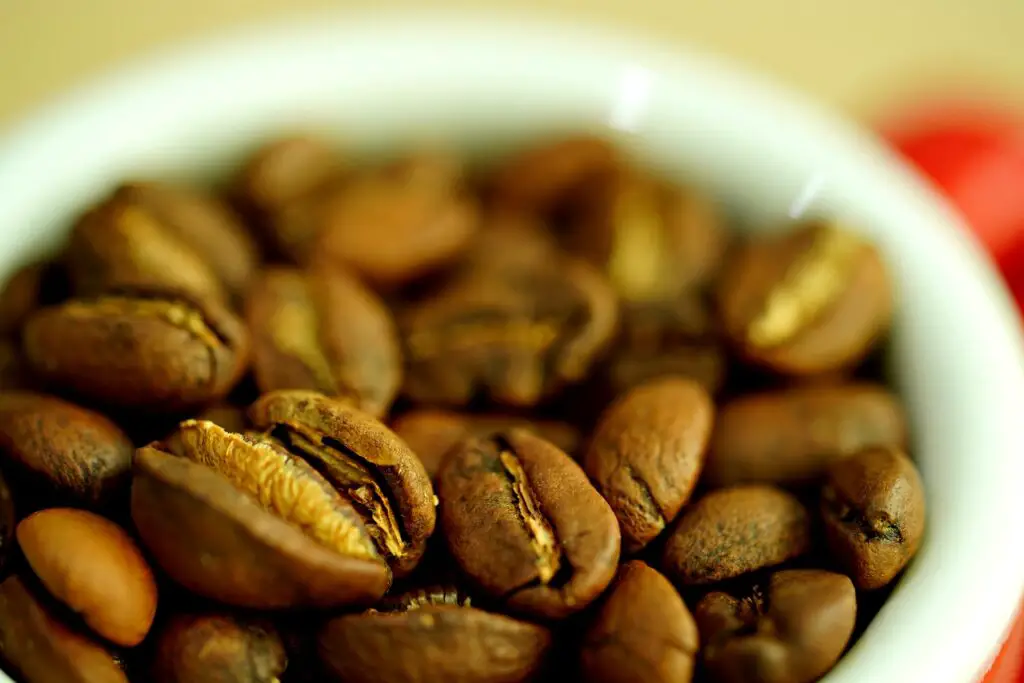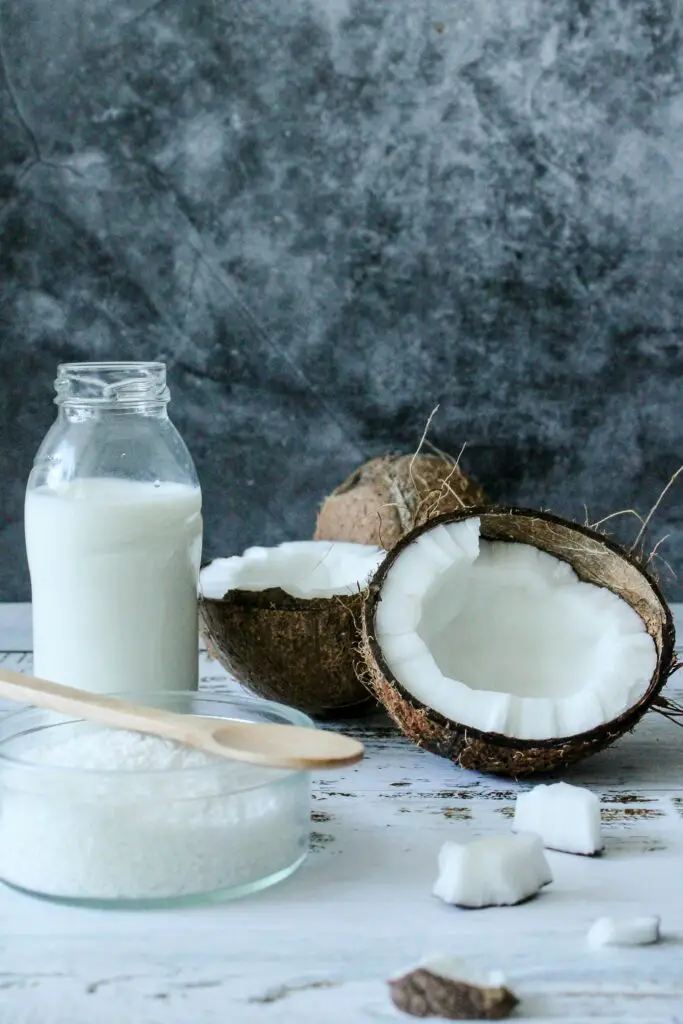Nanyang Coffee, or “kopi,” is a traditional coffee from Southeast Asia, especially popular in Singapore and Malaysia.
It’s known for its bold, robust flavor and unique preparation methods.
This coffee, made from Robusta beans, has a rich history and deep cultural significance in the region.
Whether you’re a coffee lover or just curious, learning about Nanyang Coffee offers a fascinating glimpse into Southeast Asian coffee culture.
Let’s look at what makes this coffee so special and why it’s cherished by so many.

History and Origins of Nanyang Coffee
Nanyang Coffee has a rich history that dates back to the early 20th century.
It originated in Southeast Asia, particularly in countries like Singapore, Malaysia, and Indonesia.
The term “Nanyang” means “South Sea” in Mandarin, referring to Maritime Southeast Asia.
The story of Nanyang Coffee begins with Chinese immigrants, mainly from the Hainan province, who settled in these regions.
They brought with them their love for coffee and adapted it to local tastes and resources.
This adaptation led to the unique and bold flavor that defines Nanyang Coffee today.
Traditional Nanyang Coffee is made from Robusta coffee beans.
These beans are double-roasted with butter and sugar, giving the coffee its distinct taste.
This method was a creative solution to enhance the flavor of cheaper, locally available beans.
The cultural significance of Nanyang Coffee is immense.
It became a staple in kopitiams, which are traditional coffee shops in Southeast Asia.
These coffee shops are not just places to grab a drink; they are community hubs where people gather to socialize, discuss news, and enjoy local delicacies.
The influence of Chinese immigrants is evident in every aspect of Nanyang Coffee.
From the roasting process to the brewing methods, they incorporated their techniques and local ingredients to create something truly unique.
Over time, this coffee became an integral part of the local culture and identity.
Unique Characteristics of Nanyang Coffee

Beans
Nanyang Coffee is typically made from a blend of Robusta, Liberica, and Arabica beans.
Robusta beans are most commonly used because they are easier to cultivate and less expensive.
These beans are sourced from various regions in Southeast Asia, including Malaysia, Indonesia, and Vietnam.
Each type of bean contributes to the rich and complex flavor profile of Nanyang Coffee.
Roasting Process
The roasting process for Nanyang Coffee is unique and traditional.
It involves roasting the beans with butter and sugar, and sometimes margarine and other additives.
This method enhances the Maillard reactions and caramelization, giving the coffee its distinctive taste.
Unlike other coffee roasting methods, which focus solely on the beans, Nanyang Coffee’s process adds these ingredients to create a richer, more flavorful coffee.
Flavor Profile
Nanyang Coffee is known for its bold and robust flavors.
The use of butter and sugar during roasting creates a dark, creamy drink with a subtle sweetness.
This contrasts with Western and specialty coffees, which often emphasize the natural flavors of the beans.
Roasting Time and Temperature
Nanyang Coffee beans are roasted for a longer period at a lower temperature.
This slower roasting process helps develop the deep, rich flavors that characterize Nanyang Coffee.
The extended roasting time also contributes to the coffee’s creamy texture and bold taste.
Fineness of Ground Beans
The fineness of the ground beans used for Nanyang Coffee is coarser than that used for espresso.
This coarser grind is essential for the traditional extraction process.
Using a coffee sock and kettle, the coarser grounds allow for a slower extraction, which helps to develop the coffee’s rich flavors.
This method contrasts with the high-pressure extraction used for espresso, highlighting the unique preparation techniques of Nanyang Coffee.
Brewing Methods

Traditional Brewing Techniques
Nanyang Coffee is traditionally brewed using a coffee sock and a kettle.
The coffee sock is a cloth filter attached to a metal ring, resembling a small sock, which is used to strain the coffee grounds.
This method has been passed down through generations and remains popular in Southeast Asia
Ingredients:
- 20 grams of Nanyang Kopi powder
- 200 grams of hot water
Brewing Instructions:
- Measure 20 grams of Nanyang Kopi powder and place it in the coffee sock.
- Boil 200 grams of water.
- Pour a small amount of hot water over the coffee grounds to saturate them.
- Let the coffee grounds bloom for about 30 seconds.
- Gradually pour the remaining hot water over the coffee grounds.
- Allow the coffee to drip through the sock into your cup or pot.
- Stir the brewed coffee to ensure it is well-mixed.
- Serve the coffee as is, or add sugar, condensed milk, or evaporated milk to taste.
Use of Vietnamese Phin
Another method to brew Nanyang Coffee involves using a Vietnamese phin.
The phin is a type of drip coffee maker that allows for a slow and controlled brewing process.
Explanation of the Phin and Its Use:
The Vietnamese phin consists of four parts: a lid, a brewing chamber, a filter press, and a base.
Here’s how to use it for brewing Nanyang Coffee:
- Place the base of the phin on top of your coffee cup.
- Add 20 grams of medium-fine ground robusta coffee to the brewing chamber.
- Gently press the filter press onto the coffee grounds to level them.
- Pour a small amount of hot water (about 195 degrees) into the brewing chamber and let the coffee bloom for 30 seconds.
- Add the remaining hot water, filling the chamber.
- Place the lid on top and let the coffee drip slowly into the cup.
- The first drip should fall within two minutes, and the brewing process should be complete within five minutes.
- Stir the brewed coffee and add sweetened condensed milk if desired for a syrupy texture.
Homemade Additions

Making Homemade Sweetened Condensed Milk
Making your own sweetened condensed milk at home is simple and rewarding.
You only need a few ingredients:
- 2 cups of whole milk
- 1 cup of sugar
- 3 tablespoons of unsalted butter
- 1 teaspoon of vanilla extract
Steps:
- Combine Milk and Sugar: Pour the milk and sugar into a saucepan. Stir well to combine.
- Heat and Simmer: Place the saucepan over medium heat. Stir occasionally until the mixture comes to a simmer. Reduce the heat to low and let it simmer gently. Continue stirring occasionally to prevent it from sticking to the bottom of the pan.
- Reduce the Mixture: Allow the mixture to simmer until it has reduced by half. This will take about 30-40 minutes. The mixture should thicken and take on a creamy consistency.
- Add Butter and Vanilla: Once reduced, remove the saucepan from the heat. Stir in the butter and vanilla extract until fully combined.
- Cool and Store: Let the mixture cool to room temperature. Transfer it to a jar or airtight container and store it in the refrigerator. It will continue to thicken as it cools.
Tips for Dairy-Free Versions

If you’re lactose intolerant or prefer a dairy-free option, you can still enjoy sweetened condensed milk with a few simple substitutions:
Ingredients:
- 2 cups of full-fat coconut milk
- 1 cup of sugar
- 2 tablespoons of coconut oil
- 1 teaspoon of vanilla extract
Steps:
- Combine Coconut Milk and Sugar: Pour the coconut milk and sugar into a saucepan. Stir well to combine.
- Heat and Simmer: Place the saucepan over medium heat. Stir occasionally until the mixture comes to a simmer. Reduce the heat to low and let it simmer gently, stirring occasionally.
- Reduce the Mixture: Allow the mixture to simmer until it has reduced by half, which will take about 30-40 minutes. The mixture should thicken and take on a creamy consistency.
- Add Coconut Oil and Vanilla: Once reduced, remove the saucepan from the heat. Stir in the coconut oil and vanilla extract until fully combined.
- Cool and Store: Let the mixture cool to room temperature. Transfer it to a jar or airtight container and store it in the refrigerator. It will thicken further as it cools.
Popular Varieties of Nanyang Coffee
Kopi-O Kosong
- Description: Kopi-O Kosong is a straightforward, no-frills black coffee. “Kosong” means “empty” in Malay, indicating that this variety is served without any sugar or milk.
- Preparation: Brew Nanyang Coffee using the traditional method with 20 grams of coffee powder and 200 grams of hot water. Serve the coffee black, without any additives.
Kopi-O
- Description: Kopi-O is a black coffee sweetened with sugar. It’s a popular choice for those who enjoy a bit of sweetness but prefer their coffee without milk.
- Preparation: Brew Nanyang Coffee as usual. After brewing, stir in a teaspoon or two of sugar, depending on your preference, until it dissolves. Serve hot.
Kopi
- Description: Kopi is a rich, creamy coffee made with sweetened condensed milk. This variety is beloved for its smooth, indulgent taste.
- Preparation: Brew the coffee using the traditional method. Add two tablespoons of sweetened condensed milk to the brewed coffee and stir until fully combined. Adjust the sweetness to taste.
Kopi-C
- Description: Kopi-C combines black coffee with evaporated milk and sugar. It offers a less sweet but still creamy alternative to Kopi.
- Preparation: Brew the coffee as usual. Add two tablespoons of evaporated milk and a teaspoon of sugar to the coffee. Stir well and serve hot.
Iced Variations
Kopi-O Kosong Peng
- Description: This is the iced version of Kopi-O Kosong, providing a refreshing option for hot days.
- Preparation: Brew Kopi-O Kosong and let it cool. Pour the coffee over ice cubes and serve immediately.
Kopi-O Peng
- Description: Iced Kopi-O is a sweetened black coffee served cold, perfect for a cooling treat.
- Preparation: Brew Kopi-O and let it cool. Pour the coffee over ice cubes and stir well. Serve chilled.
Kopi-Peng
- Description: Kopi-Peng is iced coffee with sweetened condensed milk. It’s a creamy and sweet cold beverage.
- Preparation: Brew Kopi and let it cool. Pour the coffee over ice cubes, add sweetened condensed milk, and stir until combined. Serve cold.
Kopi-C Peng
- Description: Iced Kopi-C is a refreshing blend of black coffee, evaporated milk, and sugar, served cold.
- Preparation: Brew Kopi-C and let it cool. Pour the coffee over ice cubes, stir well, and serve chilled.
Pairing Nanyang Coffee with Local Cuisine

Kaya Toast
Kaya toast is a beloved breakfast staple in Southeast Asia.
This delightful dish features fluffy toast spread with kaya, a sweet coconut jam made from coconut milk, sugar, eggs, and pandan leaves.
The toast is often served with a pat of cold butter, which melts into the warm bread, creating a deliciously rich bite.
Pairing kaya toast with Nanyang Coffee enhances the sweetness of the kaya and the buttery richness of the toast, making for a perfect balance of flavors.
Dim Sums
Dim sums are small, savory dishes typically served in steamer baskets or on small plates.
These bite-sized portions can include dumplings, buns, and rolls filled with a variety of ingredients like pork, shrimp, and vegetables.
The robust and bold flavor of Nanyang Coffee complements the savory and sometimes spicy notes of dim sums.
Cendol
Cendol is a popular dessert in Southeast Asia, known for its refreshing and sweet profile.
It consists of green rice flour jelly, coconut milk, and palm sugar syrup, often served over crushed ice.
The sweet and creamy elements of cendol contrast beautifully with the bold and strong notes of Nanyang Coffee.
Nanyang Coffee vs Specialty Coffee

Variety of Beans
Nanyang Coffee primarily uses Robusta and Liberica beans, with occasional blends of Arabica.
These beans are often sourced from Malaysia, Indonesia, and Vietnam.
Robusta beans are favored for their strong, bold flavors and higher caffeine content.
Specialty Coffee, on the other hand, typically uses high-quality Arabica beans sourced from various regions worldwide, including Ethiopia, Colombia, and Brazil.
The selection focuses on unique flavor profiles and single-origin beans that highlight the characteristics of their growing region.
Roasting Process
The roasting process for Nanyang Coffee is traditional and unique.
It involves roasting the beans with butter, sugar, and sometimes margarine to enhance the Maillard reactions and caramelization.
This gives Nanyang Coffee its distinctive rich, dark, and creamy profile.
In contrast, Specialty Coffee roasters emphasize preserving the natural flavors of the beans.
The roasting process is carefully controlled to bring out the specific notes of each bean variety, often using lighter roasts to highlight fruity, floral, or acidic characteristics.
Flavor Profile
Nanyang Coffee is known for its bold and robust flavors, with a deep, caramelized sweetness due to the traditional roasting process.
It offers a strong, full-bodied taste that is often complemented by the addition of condensed milk or sugar.
Specialty Coffee, however, offers a diverse range of flavors depending on the bean and roast.
You can find notes of fruit, chocolate, nuts, and spices.
The flavor profiles are more nuanced and complex, aiming to showcase the unique attributes of each coffee’s origin.
Brewing Methods
Nanyang Coffee is typically brewed using a coffee sock and kettle, resulting in a rich and robust cup.
The grounds are coarser, and the extraction process is slower, which helps in developing its distinct flavor.
Specialty Coffee employs various brewing methods such as pour-over, Aeropress, French press, and espresso machines.
Each method aims to extract the best flavors from the beans, often focusing on precision and control over the brewing variables like water temperature and brewing time.
Cultural Significance
Nanyang Coffee holds a special place in the culture of Southeast Asia, particularly in countries like Singapore and Malaysia.
It is deeply embedded in the daily lives of the locals, often enjoyed in kopitiams (coffee shops) as part of social gatherings and community interactions.
Specialty Coffee, while also appreciated globally, tends to focus more on the artisanal aspect and the appreciation of coffee as a craft.
It has created a subculture of coffee enthusiasts who value the story behind the beans, the skill of the roaster, and the precision of the brewing process.
Wrapping Up
Nanyang Coffee, with its rich history and unique preparation methods, offers a distinct flavor that stands out among coffee varieties.
The use of Robusta, Liberica, and Arabica beans, combined with traditional roasting techniques, creates a bold and robust taste.
Brewing methods like the coffee sock and the Vietnamese phin add to its authenticity.
Enhancements with sweetened condensed milk, evaporated milk, and sugar cater to various preferences.
Whether enjoyed hot or iced, each cup of Nanyang Coffee carries cultural and historical significance.
It’s more than just a beverage; it’s a connection to Southeast Asia’s vibrant coffee culture.


